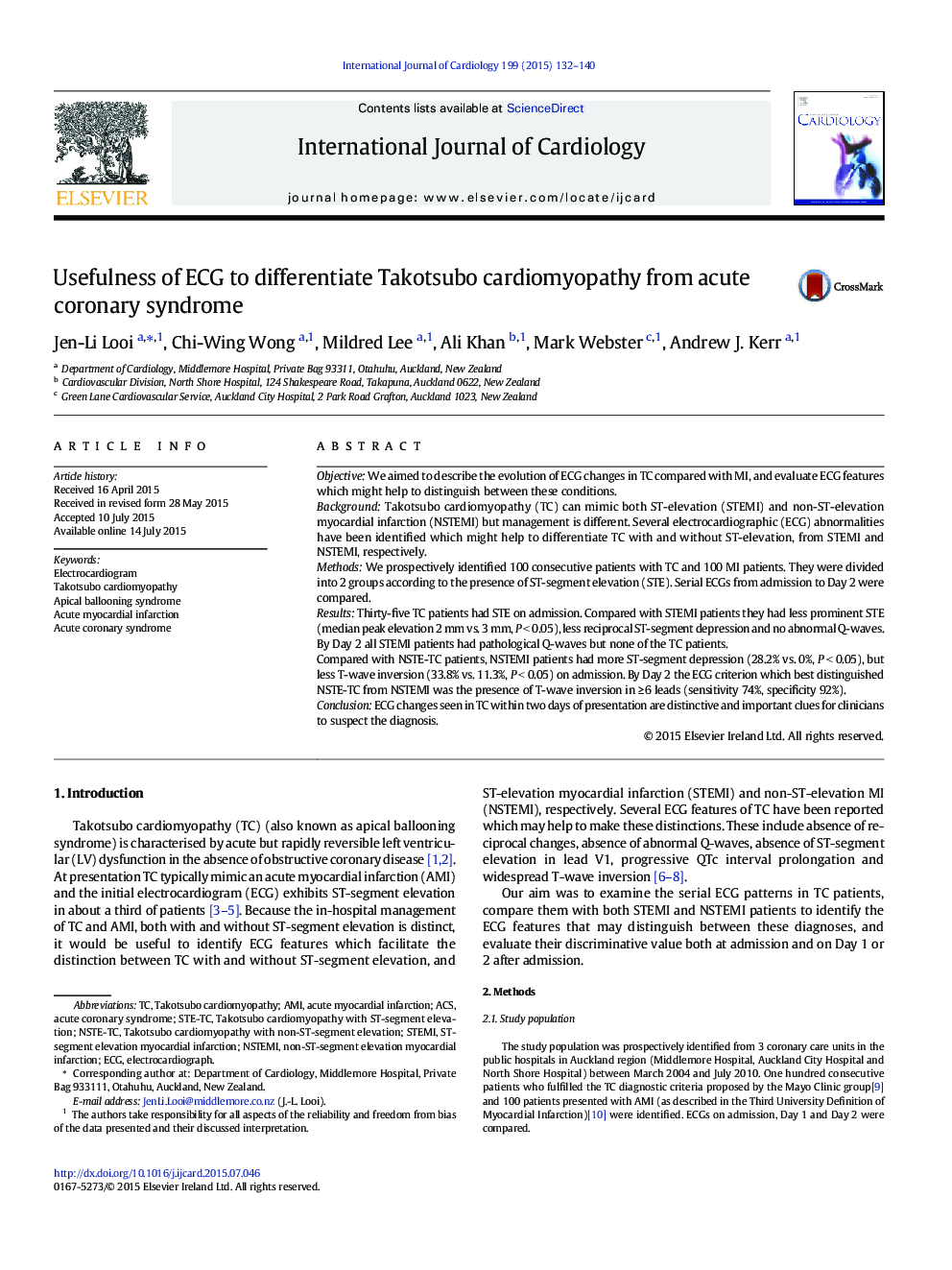| Article ID | Journal | Published Year | Pages | File Type |
|---|---|---|---|---|
| 5965853 | International Journal of Cardiology | 2015 | 9 Pages |
ObjectiveWe aimed to describe the evolution of ECG changes in TC compared with MI, and evaluate ECG features which might help to distinguish between these conditions.BackgroundTakotsubo cardiomyopathy (TC) can mimic both ST-elevation (STEMI) and non-ST-elevation myocardial infarction (NSTEMI) but management is different. Several electrocardiographic (ECG) abnormalities have been identified which might help to differentiate TC with and without ST-elevation, from STEMI and NSTEMI, respectively.MethodsWe prospectively identified 100 consecutive patients with TC and 100 MI patients. They were divided into 2 groups according to the presence of ST-segment elevation (STE). Serial ECGs from admission to Day 2 were compared.ResultsThirty-five TC patients had STE on admission. Compared with STEMI patients they had less prominent STE (median peak elevation 2 mm vs. 3 mm, P < 0.05), less reciprocal ST-segment depression and no abnormal Q-waves. By Day 2 all STEMI patients had pathological Q-waves but none of the TC patients.Compared with NSTE-TC patients, NSTEMI patients had more ST-segment depression (28.2% vs. 0%, P < 0.05), but less T-wave inversion (33.8% vs. 11.3%, P < 0.05) on admission. By Day 2 the ECG criterion which best distinguished NSTE-TC from NSTEMI was the presence of T-wave inversion in â¥Â 6 leads (sensitivity 74%, specificity 92%).ConclusionECG changes seen in TC within two days of presentation are distinctive and important clues for clinicians to suspect the diagnosis.
